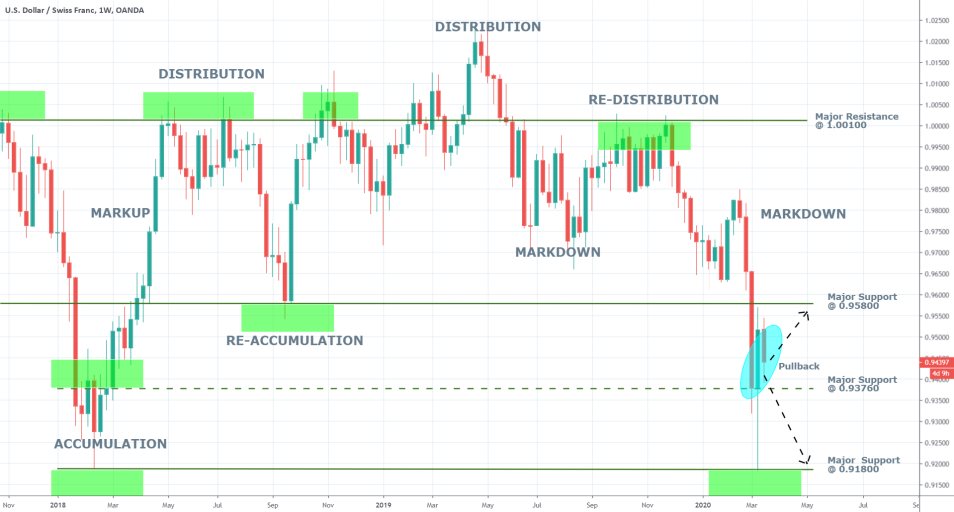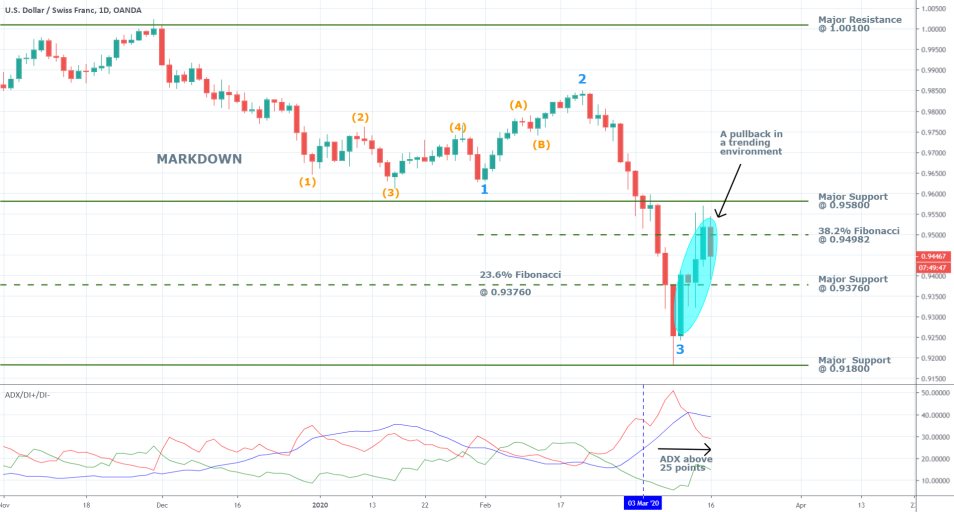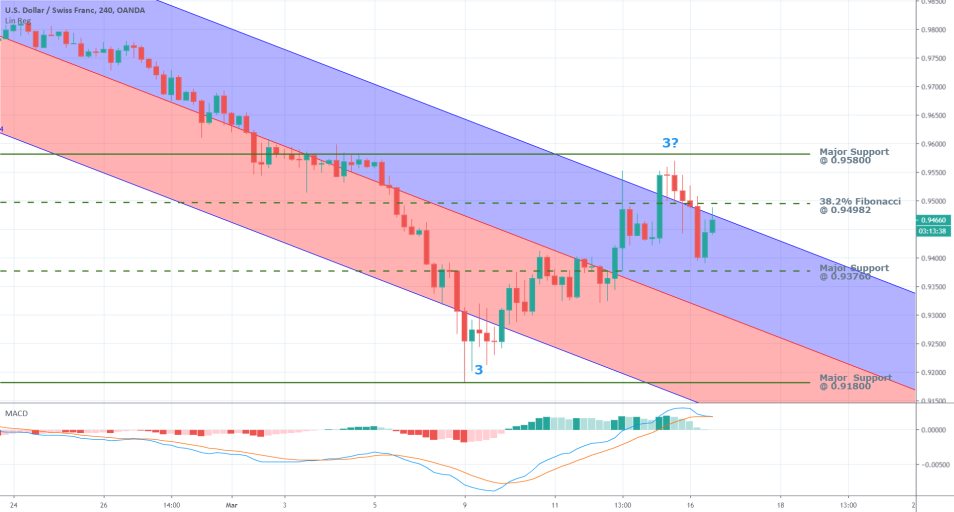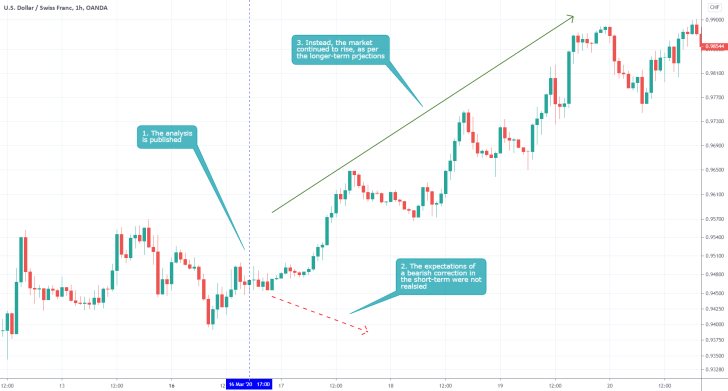The market is currently undergoing profound changes as the global economy continues to suffer from the outbreak of the novel and deadly coronavirus. Stocks in Europe and the US are plummeting today after the global epicentre of the pathogen has moved away from China and into Europe, with Italy being the most affected country in the EU so far.
Central banks worldwide were quick to react to the continuously developing situation by cutting their own interest rates and flooding the capital markets with cheap liquidity. (Read more on the many effects of increased money supply on the general economy here).
In a snap decision from yesterday, the FED decided to cut the federal funds rate and bolster its Quantitative Easing program in an unscheduled emergency meeting for the second time this month. The markets reacted quite acutely to the decision at today’s open, as US and European stocks both tumbled with a nearly 10 per cent gap.
All of these developments, in addition to the Swiss National Bank's scheduled meeting on Thursday, are bound to increase the underlying volatility on the USDCHF. Despite the mounting market uncertainty, the pair has exhibited strong resilience to the underlying external pressures.
All things considered, all of the necessary prerequisites for the execution of new trading ideas are present. This means that the anticipated boost in headline volatility could turn the USDCHF into the most exciting pair in the FX market over the next several days. That is why the current analysis examines the likely ramifications from FED’s recent monetary policy decision, as well as the prospects before the SNB ahead of its Thursday meeting.
1. Long Term Outlook:
As can be seen from the weekly chart below, the USDCHF is currently trading in a decided downtrend. The price has recently jumped from the major support level at 0.91800 and has subsequently formed a pullback.

Why did the price jump back so quickly last week from a technical point of view? The price reached the lower boundary of the previous Accumulation range, which is naturally a very solid price level and a likely turning point for the direction of the underlying price action. Hence, even future downswings are likely to be halted, (at least temporarily) and their conviction tested, at the 0.91800 support level.
The USDCHF jumped last week on the expectation for more help by the Federal Reserve in the combined efforts to tackle the inhibited economic activity in the US, which resulted in the strengthening of the dollar. The greenback was additionally bolstered by the rising demand worldwide for liquid assets. Since it is the most convertible currency in the world, as well as the most widely used one, the dollar tends to surge at times of global panic and distress.
Nevertheless, the pair tanked marginally after the open of this week’s session, because investors and traders mostly perceived FED’s Sunday decision as a panicky one. So far, the USDCHF has been able to consolidate above the major support level at 0.93760, however, in the wake of the most recent developments, the pair looks bound to test the strength of set level once again.
2. Low Interest Rates and Enhanced QE Programs Worldwide. What Would They Mean for the USDCHF?
A looser monetary policy, which has become the desired course of action for most central banks, is going to change the underlying market pressures that are currently affecting the USDCHF in a substantial way. The more significant money supply in the American economy is desired to boost the underlying economic activity but could also affect the competitiveness of the greenback in a number of ways. Hence, it is worthwhile to examine the likely consequences of this profound paradigm shift on both the USD and the CHF respectively:
- In the US. The markets did not react especially well to FED’s decision to cut the rates preemptively and ahead of the scheduled meeting for Wednesday. They instead welcomed the decision as a sign of panic and uncertainty among the top officials of the FOMC.
A chief concern among market experts is that the FED has essentially fired all of its bullets at such an early stage of the crisis, by lowering the Federal Funds Rate to a target-level of near negative interest. What this means is that if the situation continues to worsen in the following weeks, when the outbreak is expected to near a peak in the US, and the negative economic pressures deepen, the central bank will not have any breathing room to intervene. At the present moment, ostensibly negative interest rates do not seem like a viable option.
Jerome Powell and the Committee are now being criticized for their nonchalant use of loose monetary policy in the past when the economic circumstances were not as severe as they are right now, which rendered the policy less-effective at the time when it is most needed.
Right now, the dollar is rising on speculative pressures, as investors scramble to find liquid assets, which are the most convertible and useful instruments at times of general market distress. In the long-term, however, the dollar is likely to depreciate after the market starts to price in the impact of the bolstered money supply on the currency’s competitiveness on the foreign exchange.
- In Switzerland. The Swiss National Bank typically holds four meetings throughout the year – in March, June, September and December. It assesses the economic conditions that have been observed over the previous quarter and publishes its medium-term conditional inflation forecast. Due to the rarity of these economic gatherings, each one is typically followed by heightened volatility on all CHF pairs.
This week’s gathering is anticipated to be unlike most of SNB’s meetings due to the coronavirus’ rapid spread in the country and the resulting economic fallout globally.
The SNB is very likely to revise down its inflationary expectations, which is going to have a negative impact on the value of the CHF. Additionally, the central bank is expected to implement a more accommodative monetary policy stance, which is undoubtedly going to bolster the underlying volatility even more.
3. Short Term Outlook:
The daily chart below sheds light on the intricacies of the USDCHF's price action in the short run. Using Elliott Wave Theory, it can be discerned that the price action is currently in the process of developing the corrective 3-4 pullback, which should be followed by the 4-5 impulse. Since the underlying market sentiment is bearish, the USDCHF is likely to head lower once the 3-4 peak of the current pullback is formed.

The above attestation is confirmed by the ADX, which is currently threading above 25 points. Whenever the underlying price action finds itself in such a trending environment, interim adverse pullbacks are less likely to turn into trend reversal patterns. Hence, the current pullback is less likely to be a new major upswing, and more likely to be a temporary pause before the development of the prevalent bearish trend is continued.
The price is currently consolidating between the 38.2 per cent Fibonacci retracement level at 0.94982 and the 23.6 per cent Fibonacci retracement at 0.93760 (the same level as the aforementioned major support there). Such behaviour is also illustrative of likely waning of the bullish momentum in the short term.

The MACD on the 4H chart above suggests that the bullish momentum in the short term has indeed reached a peak, which could potentially be followed by a bearish crossover.
The price action has retraced back within the boundaries of the descending channel, which means that the recent breakout is losing steam, and is unlikely to continue past the major support (currently resistance) level at 0.95800.
4. Concluding Remarks:
Trading on the USDCHD at the present moment entails certain risk from high underlying volatility, which, simultaneously, is where the possibility for profitmaking arises from as well. In the medium term, the pair is likely to continue tanking as the higher liquidity in the US starts to degrade from the greenback's competitiveness gradually. In the short term, however, the world's most popular currency could continue to be supported by investors demand for safe-haven assets.

- The analysis completely mixed its long-term projections with its shorter-term expectations, leading to the execution of a short order based on the expectations for the formation of a bearish correction. Instead, the existing bullish trend was continued. Occasionally, all traders can completely misjudge the underlying market sentiment, regardless of their skill level. If they apply solid risk management techniques, however, this should not be an issue. The big takeaway here is the need for traders with all sorts of experience to acknowledge the fact that their judgement is not infallible, and sooner or later they are going to make mistakes, and that is OK. These types of mistakes represent the perfect timing for traders to take some time off the market (several days at least) to recharge, relax, and reflect on their past performance from a distance. Remember to take breaks from trading, especially after a stretch of losses!
Disclaimer: Your capital is at risk! Trading and investing on the financial markets carries a significant risk of loss. Each material, shown on this website, is provided for educational purposes only. A perfect, 100% accurate method of analysis does not exist. If you make a decision to trade or invest, based on the information from this website, you will be doing it at your own risk. Under no circumstances is Trendsharks responsible for any capital losses or damages you might suffer, while using the company’s products and services. For more information read our Terms & Conditions and Risk Disclaimer.





















